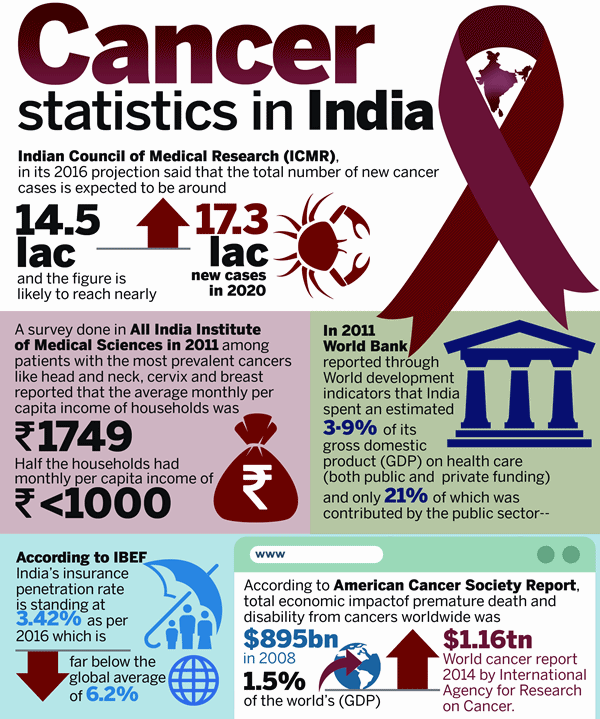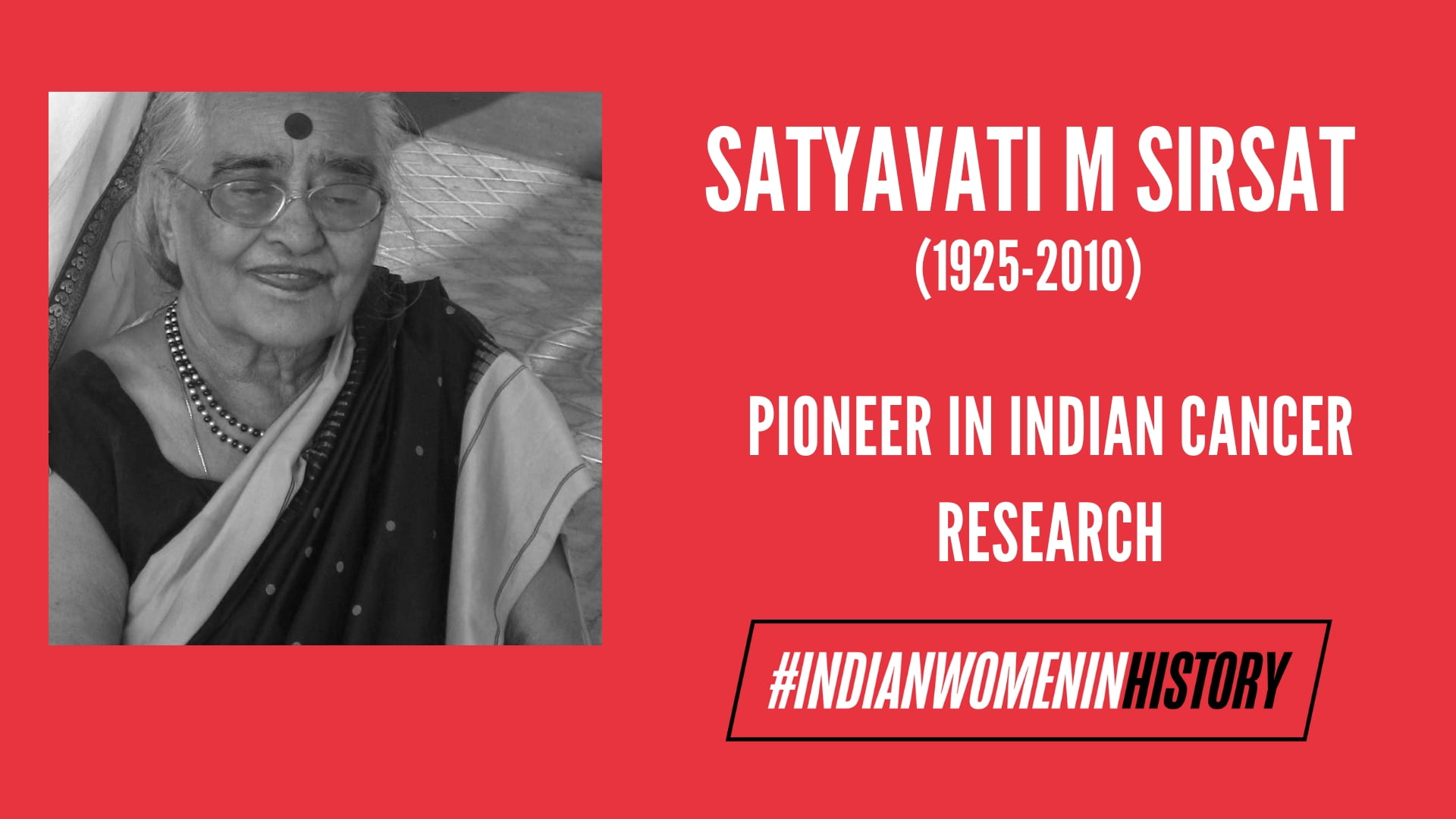This article is a part of the #IndianWomenInHistory campaign for Women’s History Month to remember the untold legacies of women who shaped India, especially India’s various feminist movements. One Indian woman is profiled each day for the whole of March 2019.
Way before any IITs or state prioritised education existed in India, Dr Satyavati M Sirsat (1925-2010) was spearheading microbiology studies and cancer research in India. Until November 2017, 1066 studies based on clinical research are registered in CTRI (Clinical Trials Registry-India), which can rightfully be called the fruit of her labour.

She worked in the fields of cancer research pathology, wound healing and regeneration, viruses and human cancer for more than 50 years.
She recounts her passion for science in a publication Exploring nature’s secrets, “My first look through an optical microscope at a smear of a mixed gram-positive and negative culture of microorganisms gave me an emotional thrill I can never forget.”
Also read: Mary Poonen Lukose: A Physician And Pioneering Figure | #IndianWomenInHistory
Early Life And Education
Satyavati Motiram Sirsat was born on 7 October 1925 in Karachi. Her family lived through various countries due to her father’s shipping ventures post career of an English professor in Mumbai. This exposed her to various cultures and contributed to her rich personality. Her theosophist parents educated her in the Beasant Memorial School of George and Rukmini Arundale when her mother settled in Chennai with the children. Here, she got the early taste of music, literature and South Indian dance which remained close to her heart throughout her life. Her mother tongue was Gujarati but she was fluent in various other languages, like Tamil, Kannada, Hindi, Marathi, English and French.
She developed an interest in microbiology through the book, The MicrobeHunters, by Paul de Kruif which led to completion of her bachelor’s degree in Microbiology from St Xavier’s College, Mumbaiin 1947. She went on to associate with the Tata Memorial Hospital for Cancer. As a senior doctoral student there, she got involved when the Department of Pathology at Tata was developed by the government into an independent Cancer Research Institute.

Contribution To Indian Scientific Research
After completing her PhD in 1958, Satyavati went on to study electron microscopy at the Chester Beatty Research Institute, London. She then established an electron microscopy lab at Indian Cancer Research Centre, a first in India. This gave Indian researchers the first thorough insight into the detailed cellular structure and offered ways for disease diagnosis through the examination of molecules within organs. This was the first time someone had attempted to study the molecular aspects of cancer. Her exhaustive study in fibre and tissue structures of human cancers opened new pathways in cancer diagnosis that were impossible earlier.
We could say that
for the warnings we find on tobacco packets saying “May cause mouth cancer”, we owe her the credit.
Journals like Nature, Nature New Biology and the Journal of National Cancer Institute have documented her contributions to scientific literature multiple times. She has also been on the Editorial Boards of several journals, including Journal of Biosciences and Indian Journal of Experimental Biology Education.
She pioneered studies to understand the very dangerous oral pre-cancer that plagued Indians due to excessive paan and tobacco chewing habits. Her biggest contribution remains the recognition of oral submucous fibrosis, in which a patient eventually loses the ability to even open his mouth, was a condition that occurs specifically in India and elucidated on how the disease develops. We could say that the warnings that we find on tobacco packets saying ‘may cause mouth cancer’ owe her the credit.
To further encourage scientific enquiry into the fields of microbiology and natural science, she founded The Electron Microscope Society of India. Here, she served as President from 1967 to 1972, and also performed a substantial role in instituting the Life Sciences Department at the University of Bombay.
Her time at the CRI concluded in 1985, after which she worked with the Bharatiya Vidya Bhavan Ayurvedic Centre for 17 years, where she took up a project on the classification of cancer diseases of the ‘Vriddhatrayi’ –Charaka, Sushruta and Vagbhata (manuscripts in sanskrit), owing to her rich knowledge in science and Sanskrit.

Along with Dr Lucito D’Souza, she started India’s first hospice called Shanthi Avedna Ashram in Mumbai, where the terminally ill cancer patients came to attain their end in peace. Sadly, Dr de Souza is widely recognised as the sole founder of the institution. Since its inception in 1986, Dr Sirsat continued to invest her time and energy in the care of such terminally ill patients until her body had strength. She lived till the ripe age of 85 and then left a gap in the heart of the whole scientific community in India.
“Above all, life is to learn – so learn, learn and learn! You are on the greatest adventure – exploration of nature’s secrets”
Legacy
Her endeavours in scientific research have been acknowledged through awards like the Shakuntaladevi Amirchand Prize of the Indian Council of Medical Research, the Trans Asian Award for Biological Electron Microscopy and the Bharatiya Vidya Bhavan’s Citation for Lifetime Award for Science and Humaneness. She was also elected a fellow of the Indian Academy of Sciences in 1975.
Her admirers remember her as a vivacious personality who loved to interact with the young and old alike. She was a bibliophile with a brilliant memory. Her passion for the art of various kinds gave a unique colour to her personality.
Dr Sirsat’s own words are somewhat like, “Do you want the 313 honoured
Dr Satyavati paved a road for scientific enquiry of cancers in India that the country has walked on and come very far today. We are more aware of and prepared against mouth cancers, which was her original idea to research upon. The youth of India is now educated on the ill effects of tobacco and its products, which was almost a part of our culture.
Also read: Rupa Bai Furdoonji: World’s First Female Anesthetist | #DesiSTEMinist
Because of her, there are breast cancer awareness pamphlets to be found in every clinic too. Her work in the field of electron microscopy continues to be fruitful for an entire generation of Indians. She was a truly versatile personality without whom the field of cancer research in India would simply not the same.
References
About the author(s)
Avni is a student of Public Policy and a fresh writer. She aspires to understand what the world is doing and then do something of her own.




